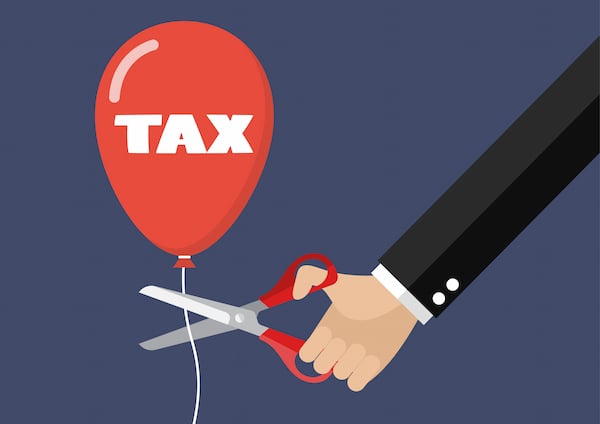Catch-up contributions can give older workers—and often small business owners themselves—a powerful boost in retirement savings. The SECURE 2.0 Act of 2022 (SECURE 2.0) made major changes to these rules that will affect how many employees (and owners) make contributions beginning in 2025 and 2026.
On September 16, 2025, the IRS published final regulations that clarify how new rules will work. The regulations don’t formally take effect until 2027, but employers must make a reasonable, good-faith effort to comply with the rules upon their respective effective date.
A key takeaway: starting in 2026, 401(k) plans must offer Roth contributions for high earners to make catch-up contributions at all. Because business owners often fall into this “high earner” group, failing to add a Roth feature could unintentionally eliminate their own ability to make catch-ups.
If you’re a small business owner, now is the time to prepare. Taking steps in 2025 and 2026 will help ensure your plan stays compliant and allows you—and your employees—to take full advantage of the new catch-up opportunities.
What Are 401(k) Catch-Up Contributions?
Catch-up contributions allow employees aged 50 or older to make additional elective deferrals above the annual 402(g) limit, up to the catch-up limit in effect for the year. These contributions help older workers to boost their savings in the final stretch of their careers.
For 2025, the 402(g) limit is $23,500, and the catch-up limit for employees aged 50 and older is $7,500. This means that catch-up eligible participants can contribute up to $31,000 in salary deferrals to their 401(k) plan in 2025.
Key Rules for 401(k) Catch-Ups
-
- Optional feature: Most 401(k) plans permit catch-up contributions, but employers have no legal obligation to allow them. They must be expressly provided for in the plan document.
- Age 50: An employee is treated as age 50 on January 1 of the calendar year in which they turn 50. For non-calendar-year plans, participants can make catch-ups even if they won’t turn 50 until the next plan year, provided they reach age 50 by December 31 of that year.
- Testing relief: Catch-up contributions are exempt from the 415(c) annual addition limit and ADP/ACP nondiscrimination testing. Elective deferrals below the 402(g) limit may be recharacterized as catch-ups (up to the catch-up limit), which can help a plan pass testing and reduce or eliminate the need for corrective refunds.
- Tax treatment: When a plan allows Roth contributions, participants can make catch-ups on either a pre-tax or Roth basis. SECURE 2.0 requires high earners to make catch-ups on a Roth basis beginning in 2026.
SECURE 2.0 Changes to 401(k) Catch-Up Contributions
SECURE 2.0 makes significant changes to existing catch-up rules, each of which have important implications for employer compliance.
Increased Catch-Up Contributions for Ages 60-63
Beginning in 2025, SECURE 2.0 raises the catch-up limit for participants ages 60–63 to the greater of $10,000 or 150% of the regular catch-up limit. For 2025, that amount is $11,250.
Here’s how the 2025 limits compare:
|
Age |
Catch-Up Limit |
402(g) Limit |
Total Contributions |
|
50-59 |
$7,500 |
$23,500
|
$31,000 |
|
60-63 |
$11,250 |
$34,750 |
|
|
64+ |
$7,500 |
$31,000 |
The final regulations clarify:
-
- Optional feature: Plans that permit catch-up contributions for employees 50+ are not required to offer the higher age 60–63 catch-ups.
- Exclusions permitted: Plans offering the higher catch-up may exclude certain groups, such as union employees and nonresident aliens.
- Indexing confirmed: The $10,000 base is indexed for inflation, so the limit will rise over time.
High Earners Must Contribute Catch-Ups as Roth
Beginning in 2026, SECURE 2.0 requires “high earners” to make catch-up contributions on a Roth basis. If a plan does not offer Roth contributions, these participants cannot make catch-up contributions.
The final regulations clarify:
-
- High Earner: defined as a plan participant who - in the preceding calendar year - received more than $145,000 (indexed for inflation) in FICA wages “from the employer sponsoring the plan”, as reported in Box 3 of the Form W-2.
- Threshold for 2026: A participant is considered a High Earner for 2026 if they received more than $150,000 in FICA wages for 2025.
- Aggregation option: If easier to administer, final regulations give employers the option to aggregate the FICA wages paid by members of a controlled group, employers using a common paymaster, and predecessor/successor employers in asset sales.
- No wages, no Roth mandate: If a participant had no FICA wages from the sponsor (e.g., partners with only self-employment income), they are not subject to the Roth-only rule for that year. They can make catch-ups on either a pre-tax or Roth basis.
- Plans without Roth: May still permit catch-ups for participants below the wage threshold and disallow them for those above without violating universal availability, provided nondiscrimination rules are met.
- Corrections: If pre-tax catch-ups are made in error, employers can correct them by either:
- Form W-2 method: Transfer contributions plus earnings to Roth and report on the W-2 (if not yet filed/furnished).
- In-plan Roth rollover method: Transfer contributions plus earnings to Roth and report the rollover on Form 1099-R.
- High Earner: defined as a plan participant who - in the preceding calendar year - received more than $145,000 (indexed for inflation) in FICA wages “from the employer sponsoring the plan”, as reported in Box 3 of the Form W-2.
Deemed Roth Catch-Up Election
The final regulations also allow plans to adopt a “deemed Roth catch-up election.” This feature lets payroll systems automatically treat excess deferrals as Roth catch-ups once the 402(g) limit is reached.
-
- Participants must have an effective opportunity to elect otherwise.
- The deemed election must be written into the plan document.
- If it turns out a participant wasn’t subject to Roth-only, amounts already treated as Roth do not need to be recharacterized—the election simply stops.
Amendment Deadlines for SECURE 2.0 Changes
While employers must begin operating their plans in line with SECURE 2.0’s catch-up rules as they take effect, the formal plan amendment deadline is later:
-
- Most plans: The last day of the first plan year beginning on or after January 1, 2026 (December 31, 2026 for calendar-year plans).
- Governmental and collectively bargained plans: The last day of the first plan year beginning on or after January 1, 2029.
In practice, this means:
-
- Operational compliance comes first. Employers must follow the new Roth-only catch-up rules for high earners beginning in 2026 and apply the higher age 60–63 catch-ups beginning in 2025.
- Formal amendment comes later. Plan sponsors don’t need to formally update plan documents until the 2026 (or 2029) deadline.
Amendment Deadline for Adding a Roth
Adding Roth to a plan is a discretionary amendment. Under IRS rules, discretionary amendments must be adopted by the last day of the plan year in which the change is effective.
-
- Example: If you want Roth contributions available starting January 1, 2025 in a calendar-year plan, the amendment must be adopted by December 31, 2025.
This is separate from the SECURE 2.0 amendment deadline.
Preparation Steps for Employers
To ensure compliance and support employees, employers should take the following steps:
- Review Plan Documents
- Confirm Roth contributions are permitted. Amend the plan if necessary.
- Decide whether to offer the higher age 60–63 catch-ups.
- Consider adopting a deemed Roth catch-up election.
- Consult with Your 401(k) Provider
- Amend your plan on time if adding Roth (no later than the last day of the effective plan year).
- Confirm in-plan Roth rollover options for correcting failures.
- Confirm Payroll Provider Readiness
- Ensure payroll can track prior-year FICA wages to identify high earners.
- Apply the deemed Roth election, if adopted.
- Educate Employees
- Inform employees aged 50+ about catch-up opportunities.
- Promote the higher age 60–63 catch-ups beginning in 2025.
- Highlight the Roth-only rule for high earners beginning in 2026.
Help Your Employees While Staying Compliant!
The SECURE 2.0 changes to 401(k) catch-up contributions present both opportunities and challenges for small businesses and their employees. By taking proactive steps now, you can ensure compliance while helping your employees maximize their retirement savings.
Need help navigating these changes? Contact us for guidance tailored to your business.




